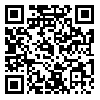Volume 6, Issue 6 (2015)
LRR 2015, 6(6): 163-183 |
Back to browse issues page
Download citation:
BibTeX | RIS | EndNote | Medlars | ProCite | Reference Manager | RefWorks
Send citation to:



BibTeX | RIS | EndNote | Medlars | ProCite | Reference Manager | RefWorks
Send citation to:
Rezapour E. Adjacency Condition and Specificity in Persian: Interface between Syntax and Semantics. LRR 2015; 6 (6) :163-183
URL: http://lrr.modares.ac.ir/article-14-8189-en.html
URL: http://lrr.modares.ac.ir/article-14-8189-en.html
Assistant Professor of General Linguistics, University, Semnan, Iran
Abstract: (7580 Views)
Adjacency condition is one of the syntactic constraints on case assignment in many languages such as English, Dutch, Turkish and Hindi. Many linguists studied adjacency condition in some languages and some of them including Chomsky (1981) and Stowell (1981) confirmed the role of this condition in generative grammar and some linguists including Johnson (1991) rejected it in generative grammar. Opponents of this hypothesis believe that adjacency condition can be replaced by projection principle and binary branching condition. In this research, we try to investigate the role of adjacency condition in Persian. Data analysis indicates that assigning structural case to subject by inflection head and also assigning structural case to definite direct object by verb are not subject to adjacency condition. In fact, the position of definite direct object and inflection head is in the specifier of inner verb phrase core and at the end of sentence, respectively which they are not adjacent to each other. However, assigning structural case to noun phrase by preposition and also assigning structural case to indefinite direct object by verb are subject to adjacency constraints. Therefore, there is a direct relationship between adjacency condition and specificity.
Keywords: Persian language, adjacency condition, specificity, case assignment, definite direct object, indefinite direct object
Published: 2015/12/22
| Rights and permissions | |
 |
This work is licensed under a Creative Commons Attribution-NonCommercial 4.0 International License. |






